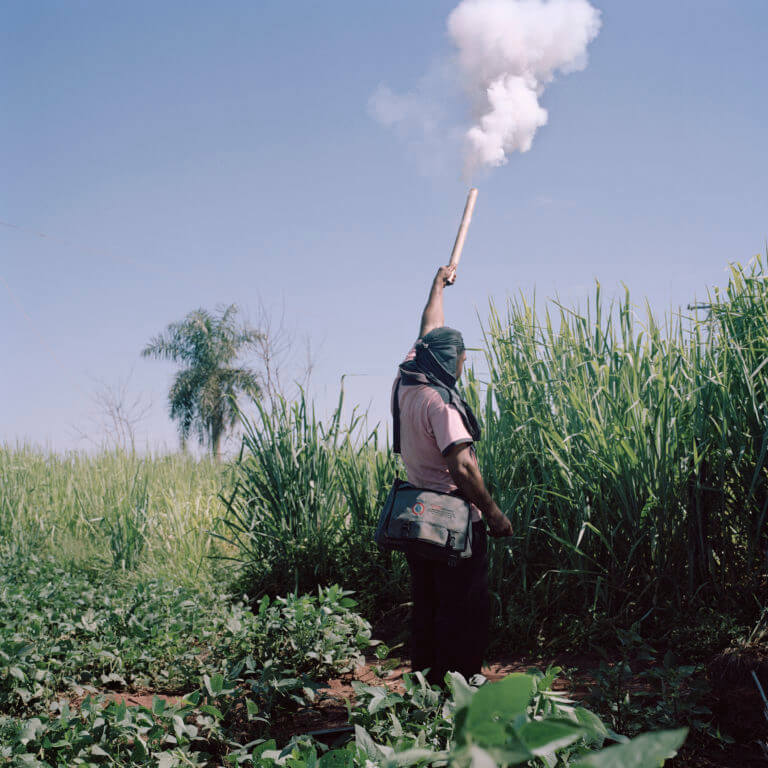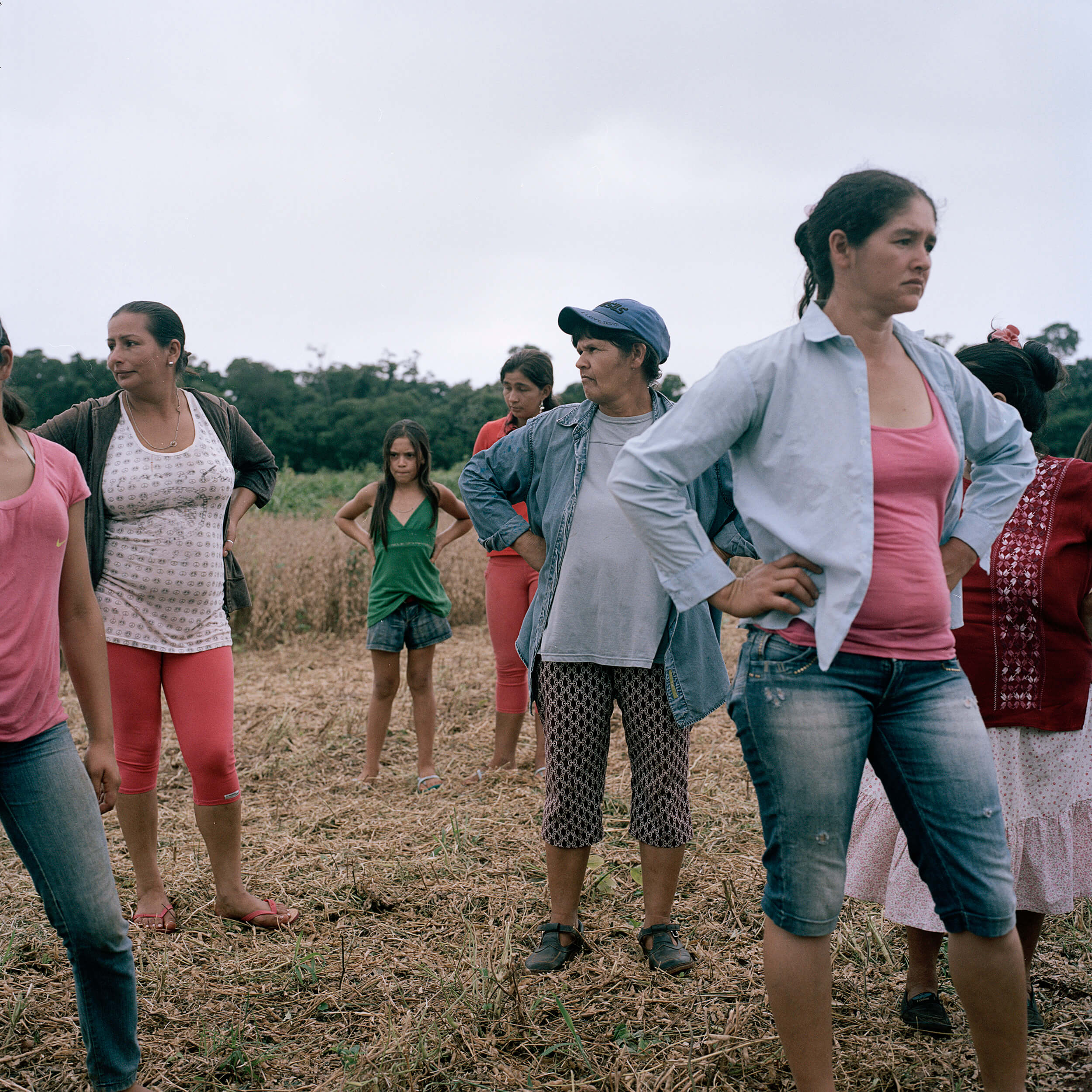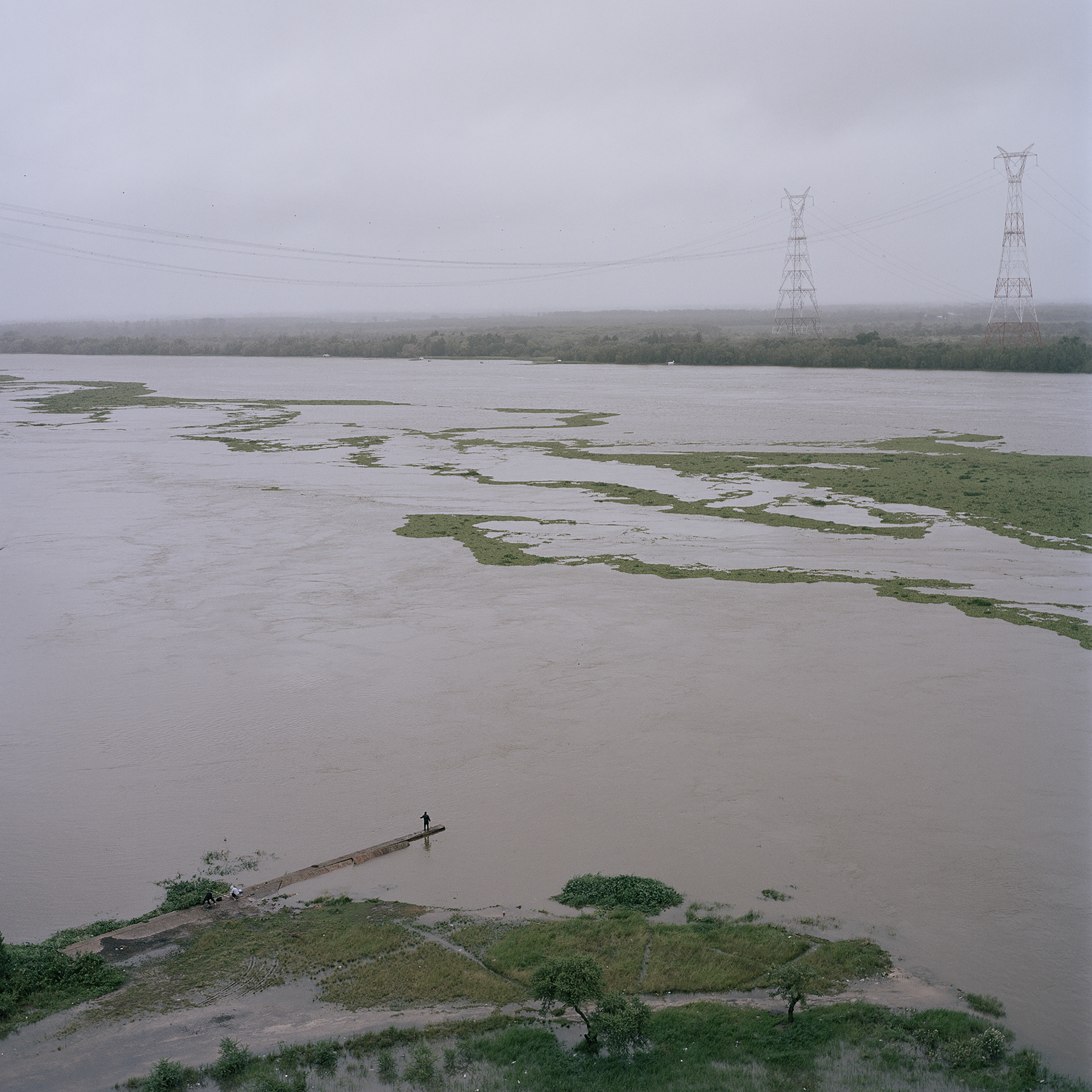























Jordi Ruiz Cirera’s series, The United Soya Republic, belongs to a tradition of what might be called quiet observational documentary. His gaze is steady, acute, sometimes contemplative, always thought-provoking. He spends time with his subjects before he spends time photographing them. The end result is a deft merging of the detached and the intimate.
In The United Soya Republic, Cirera is concerned with consequences of intensive farming in South America, both on the land itself and the people who work it. His eye is drawn to the starkly dramatic – a figure holding aloft a fire-craker to warn of fumigation – and the quietly mysterious – a rack of test tubes in a laboratory containing small green shoots of soya. The two disparate worlds evoked in these images – genetic research and labour activism – are intrinsically connected. They are parts of a bigger and depressingly familiar narrative of exploitation, dispossession and migration.
The fate of rural peasant communities tied by economic necessity to the land of their birth, but having no claim on it, is a familiar subject in documentary photography. Cirera works within and quietly subverts it. He gives us a sense of his subjects’ everyday life as well as their struggles. Through the intimacy of his snatched moments of observation – a boy bathing in a barrel, a man balancing on a branch above a mud-brown river – a world emerges that is real and engaging in its ordinariness as well as its moments of drama.
The image of a woman in tears surrounded by other concerned-looking women and their children speaks of a more complex negotiation. This is a study in vulnerability that manages to avoid the intrusive thrust of so much photojournalistic documentary. Her distress and the sombre faces of those around her, none of whom, revealingly, are engaging directly with Cirera’s camera, evoke a drama that has already happened but continues to reverberate. It is a quiet photograph of an aftermath that, for these women, is devastating: Maria Lina Estorales is describing the eviction of her entire community from their homes and the subsequent burning of her house. An image as powerfully intimate as this depends on trust. It is a collaboration of sorts.
Cirera ,though, is not a chronicler of the obvious. Consider an image entitled Silo: a smooth circular mound of grain inside a giant metal shed. In another context, it might be a photograph of a conceptual art installation – those smooth surfaces and geometrically intricate lines, the sense that everything here has been meticulously arranged by a conceptual artist. Here Cirera’s gaze is more detached, engaged with what appears to be the purely formal. This interior landscape is also part of that bigger picture, though, linked intrinsically to the chain of exploitation and mass production – and to the evictions, ecological devastation and the human suffering that accompany it. Every link in that chain of cause and effect, Cirera’s work insists, is worthy of equal attention.
When I speak to students of documentary photography, they often seemed overwhelmed by the heavy weight of that tradition as well as the profligacy of contemporary digital imagery. I always counsel that they do what great photographers have always done; put their faith in what I call ‘deep looking’. It requires patience, rigour, diligence, a lot of waiting as well as watching. It is a kind of slow photography except that it also requires the ability to work at the speed of light when that split-second moment arises.
There are images here that are instinctive, and others that seem carefully crafted out of the collaboration between photographer and subject, and others still that seem formally austere. That they come together seamlessly in the complex visual narrative that is The United Soya Republic is another testament to Cirera’s attentiveness – which extends to the selection and sequencing of the photographs. It almost goes without saying that they also require a degree of patience and attentiveness from the viewer for their quiet power to fully emerge. Take your time; it is worth the wait.
Words by Sean O’Hagan